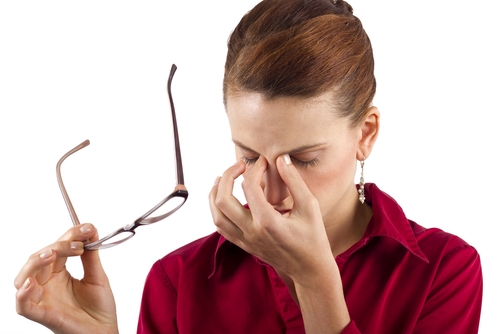Posted by: Clear Advantage in Uncategorized on March 14, 2016

Digital eye strain is a rapidly growing issue in today’s computer reliant world. If you work in an office, chances are you will be spending quite some time in front of a computer screen which can cause your eyes to strain. In fact, 70 percent of Americans who work with computers on a daily basis deal with symptoms of digital eye strain. Luckily, there are some precautions you can take to help prevent digital eye strain and protect your vision.
To further promote eye health and safety in the workplace, here are 3 ways you can protect your vision from digital eye strain:
- Don’t forget to blink: This may seem like a no brainer, but studies have shown that when we use computers we tend to blink a lot less, which causes your eyes to become dry and irritated. Blinking helps to keep your eyes lubricated and also helps to spread necessary nutrients across the eye.
- Using proper levels of Lighting: One of the biggest causes of digital eye straight is poor lighting and glare on computer screens. If the overhead lights are too bright then you should position your computer screen in a way that doesn’t reflect the lights and create glare. Light coming in through the windows can be difficult as well, depending on the time of day, so you might want to consider closing the blinds if necessary.
- Step away from your computer occasionally: There is a technique that can help you avoid digital eye strain called the 20/20/20 rule. This is an easy enough system to work into your daily routine. You just need to look away from your computer every 20 minutes at an object that is at least 20 feet away for 20 seconds or more. This technique is said to reset your eyes and keep them from getting strained.
Taking these necessary steps to help avoid digital eye strain is not only great for you, but also your productivity in the workplace, so why not give it a try? If your eyes continue to be strained, then it is recommended that you see an eye doctor for a routine eye exam.






